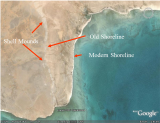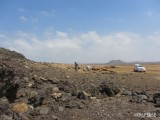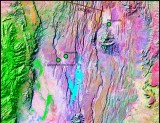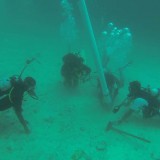One of the themes of the DISPERSE project is investigating the Holocene coastal archaeology of the Farasan Islands. Numerous shell mounds are present on the Islands, dating back to about 6000 years ago. They are associated with a rapidly changing littoral environment and provide a high resolution case study of how coastal populations adjusted to dynamic coastline changes and the nature of the resulting archaeological record.
Research
See below for a list of associated research projects. Click on a project title or image to find out more.
The archaeological record of the Arabian Peninsula is central to narratives of hominin dispersals from Africa to the rest of the globe during the Palaeolithic, with a time depth of at least 1 million years, yet its potential has only recently begun to be realised. The Southwest region of the Arabian escarpment is of particular interest as one of the most persistently well-watered and fertile regions of Arabia, easily accessible from Eritrea and Ethiopia across a very narrow sea channel interspersed with small islands for long periods of the Pleistocene.
Reconstructing the physical landscape at local, regional and continental scales of observation is central to an understanding of how factors of topography and geomorphology change over time, how they affect the resources available for human exploitation, how they mediate the impact of climate change, and how this combination of environmental factors shapes patterns of hominin land use, mobility and dispersal.
Sea levels have been lower than the present for most of human existence on the Earth, about 95% of the time, typically at depths of –40m, and for shorter periods at depths of –100m or more. Extensive areas of the continental shelf were exposed during these periods, providing a variety of landscapes and environmental conditions, many of them attractive for human settlement. All of these along with their associated coastlines and archaeological evidence became progressively inundated when the climate warmed and sea level rose at the end of the last glacial period.
The maritime component of the DISPERSE project aims to gather data from the submerged landscapes to assess areas with the potential for human occupation, and to identify the possibility for preservation of archaeological material, especially around the Farasan Islands in the southern Red Sea.
Humans clearly behave in complex and unique ways, but we are also animals, and our ancestry is subject to many of the same evolutionary and ecological processes as other species. Biological issues are central to palaeoanthropological research, and this applies as much to the investigation of dispersal as to other aspects of human evolution. Understanding hominins as evolving organisms is therefore an important theme of DISPERSE.











